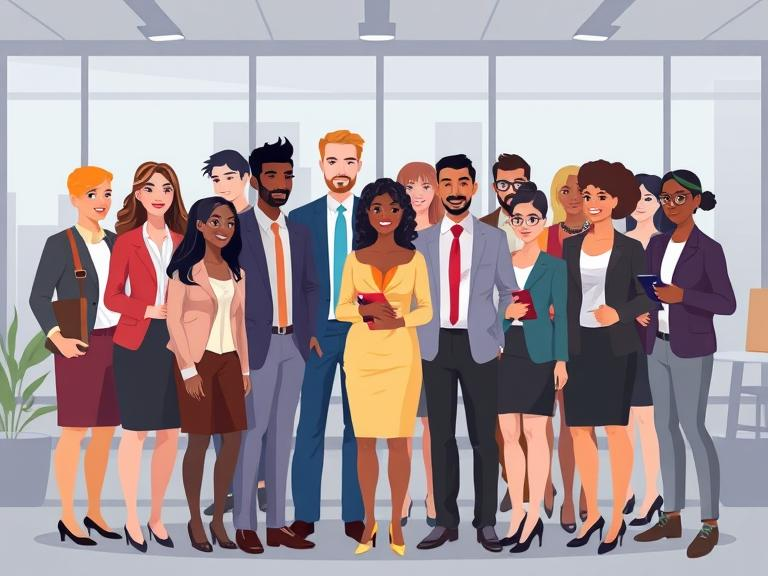Reskilling and Upskilling: Preparing the Workforce for the Future
As the pace of technological advancements accelerates and the nature of work evolves, organizations face an increasing need to equip their workforce with the skills required to stay competitive. The terms “reskilling” and “upskilling” are no longer just HR buzzwords but critical strategies for ensuring employees employable value as well as business agility and sustainability. This article explores the importance of reskilling and upskilling and how HR teams drive these initiatives.
The Difference Between Reskilling and Upskilling
Reskilling refers to training employees to take on new roles within the organization. This may happen when technological disruption or business transformations create new job requirements. For example, as business trends change and technology takes over, an employee may want to consider reskilling for more complex roles for instance data analysis or digital marketing.
Upskilling, on the other hand, focuses on enhancing an employee’s current skills so they can perform their existing role more effectively. Upskilling is crucial in industries where constant technological updates require employees to adopt new tools or methodologies to improve productivity.
Why Reskilling and Upskilling Matter
- Remain Relevant and Employable: As technologies and business operations continue to evolve, it is vital that the employee stays alert to the changes and adapts quickly by taking courses and workshops to improve current skills as well as to add new skills.
- Bridging the Skills Gap The rapid adoption of digital technologies has resulted in a significant gap between the skills employees possess and the skills required by modern businesses. Employees and Organizations must continue to invest in training programs to remain competitive.
- Improved Employee Retention and Engagement Everyone values opportunities for growth and learning. Training and development opportunities are a pathway to career growth as well as organizational growth. Organizations that actively invest in reskilling and upskilling initiatives improve their workforce’s capabilities; improve their business offerings; experience increased customer satisfaction levels; and have a happier, progressive and engaged employee base – Making it a win-win for the employees, employers and the customers.
- Enhanced Agility and Innovation A workforce capable of adapting to new challenges and technologies can drive innovation. By providing reskilling and upskilling opportunities, businesses create a culture of continuous learning, which empowers employees to take on new roles and organizations to offer new services.
- Cost-Effective Talent Management Rather than recruiting new employees or seeking new jobs to fill skill gaps, HR experts encourage reskilling and upskilling efforts, which is often more cost-effective and growth oriented in the long run. Internal mobility strengthens organizational knowledge and fosters loyalty, creating a more cohesive and knowledgeable workforce.
HR – Championing the Reskilling and Upskilling Agenda
HR teams are uniquely positioned to spearhead these initiatives by identifying skill gaps, creating tailored learning paths, and fostering a culture of lifelong learning. Here are a few key strategies HR can implement:
- Using Performance Appraisals to Assess Current Skills of the workforce and identifying areas where new skills are needed. Performance reviews are a time to gauge employee’s career interest areas and draft training and development plans. Interviews with department heads can provide useful inputs. This data can be used to design targeted reskilling and upskilling programs that address the employees and the company’s future needs.
- Leverage Digital Learning Platforms Today’s learning platforms offer flexibility and scalability, allowing employees to learn and access courses anytime and anywhere. Learning management systems (LMS) and online education providers such as Coursera, LinkedIn Learning, or Udemy make Reskilling and Upskilling easier.
- Establishing and imbibing a culture of Learning Learning should be an ongoing process, not a one-time event. HR Team at Groupsoft encourages a culture of continuous learning by rewarding employees who complete training programs, offering internal recognition, and creating peer learning groups where employees can share knowledge.
- Collaborate with Leadership For reskilling and upskilling programs to be successful, a collaborative approach with leadership to ensure training aligns with the company’s strategic goals. At Groupsoft, leadership actively champions reskilling and upskilling initiatives.
Looking Ahead
The need for reskilling and upskilling will only grow as organizations continue to adopt new technologies and adjust to market demands. By investing in the continuous development of their workforce, we not only prepare for the future but also foster a resilient, engaged, and capable team ready to meet any challenge.



